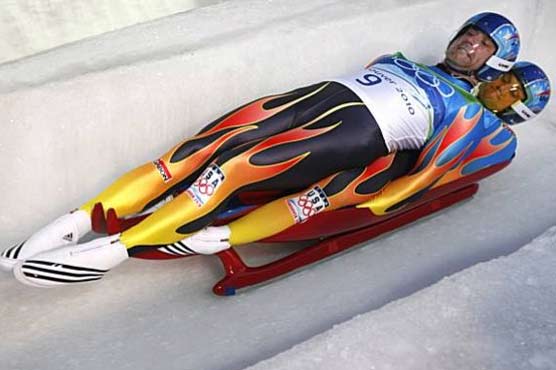World's weirdest sport: Twitterati comment on doubles luge at Pyeongchang Olympics

No wonder the doubles luge turned heads at the Pyeongchang Winter Games
PYEONGCHANG (AFP) - It is a niche sport in which two men lie, one on top of the other, in skin-tight uniforms and hurtle feet-first down an ice chute on a tiny sled.
No wonder the doubles luge turned heads at the Pyeongchang Winter Games.
Twitter was inundated with comments when the competition took place late on Wednesday at the Pyeongchang Games, with many wondering why anyone would want to do it.
Matthew Pinsent, the retired British rower who won four Olympic golds, was amazed by what he was seeing -- even though the luge is one of the oldest winter sports.
"Even as man who has spent most of my Olympic career stuffed into a small vehicle getting sweaty with big blokes in lycra -- men s double luge is still a thing of wonder," he tweeted.
Many appeared to agree.
"My brain is trying so hard to process this," said one typical post on Twitter.
"World s weirdest sport," chimed another, and one person tweeted: "Luge is if you want to kill yourself while lying on your best friend."
"Saw a couple laying on one beach lounger. I thought it looked uncomfortable but then realised they must be practising for the double luge," said another post.
- Deadly consequences -
But despite the reaction, this is top-level Olympic sport and livelihoods -- and lives -- are at stake.
So what is the luge? The first international race was held in Davos, Switzerland in 1883.
Unlike bobsleigh, competitors do not have a barrier on their sled to protect them. Nor do they have brakes as they negotiate a race track of 1,000m to 1,500m travelling as fast as a car on a motorway.
It can be done in singles, doubles or team relay. In the doubles, the larger of the two team members lies on top for better aerodynamics.
There is no women s doubles event at these Olympics -- something that did not go unnoticed by those watching the action in South Korea.
It is not a sport for the faint-hearted.
Competitors lie on their backs on a tiny sled and slide feet-first at speeds of about 140 kilometres (90 miles) per hour.
Underlining the danger involved, the Vancouver 2010 Olympics was marred by the death of Georgian luger Nodar Kumaritashvili during a fateful training run.
Earlier this week at the Pyeongchang Olympics, American luger Emily Sweeney suffered a frightening crash that saw her bounce around the track.
She escaped serious injury, but it was a reminder of the perils that lugers face in the pursuit of gold -- and for the entertainment of those safely at home on their sofas.
"When Emily crashed that was really hard," said team-mate Summer Britcher.
"I ve never been so relieved as when I saw her get up and walking."


